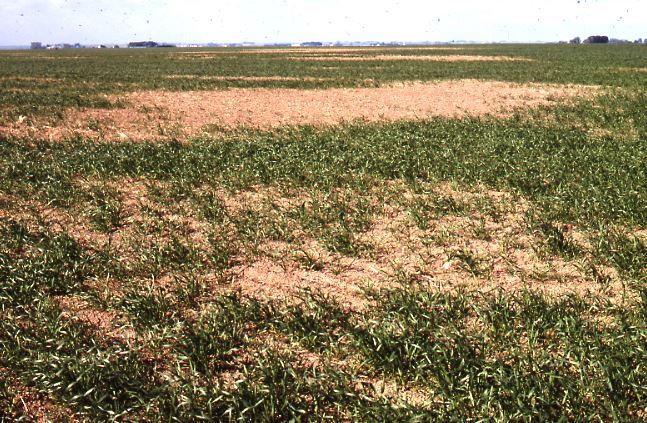Insect of the Week 2024
Welcome back to the Prairie Pest Monitoring Network Insect of the Week! In 2024, the Insect of the Week theme is “What is eating my crop?” All of the Insect of the Week posts will focus on the damage that insects pests cause to their host plants. In many cases, insect feeding damage is characteristic of certain pest species and can help to identify the insect pest or narrow down the list of suspects.
Cutworm Damage
Numerous species of cutworms can cause economic damage to crops in western Canada, including pale western cutworm (Agriotis orthogonia) and redbacked cutworm (Euxoa orchrogaster). Because there are so many species of cutworms, cutworms are an important pest complex, with quite diverse life histories, preferred host plants, and damage symptoms.
All cutworm species undergo complete metamorphosis during their lifetime, progressing through four stages: egg, larva, pupa, and adult. The larval stage is responsible for damage to crops and forage plants. Several cutworm species overwinter as larvae in western Canada, including army cutworm (Euxoa auxiliaris), dusky cutworm (Agrotis venerabilis), and glassy cutworm (Apamea devastator). Therefore, there might already be larval feeding activity happening where these species are present.

There are three primary types of feeding behaviour used by larval cutworms:
1) Subterranean larval feeding, where larvae cut the main stem and consume the foliage by pulling it underground. These larvae are almost never seen out of the soil. The glassy cutworm is an example of a subterranean cutworm. Bare patches in crops, as pictured above, can be indicative of larval feeding by subterranean cutworms.
2) Defoliation by above-ground and surface-feeding larvae that feed on foliage at night but spend the day hiding under leaf litter or under the soil. The army cutworm is a typical above-ground feeding cutworm; late-instar larvae will eat entire leaves, while young larvae feed along the leaf margins. Damage typical of the black cutworm (Agrotis ipsilon) includes irregularly shaped holes in the leaves and stem cutting.
3) Defoliation by climbing cutworms, where the main stem is not usually damaged but is used by larvae to reach the leaves. Damage to the foliage is similar to that caused by above-ground or surface-feeding cutworms.
For more information about cutworms and the damage that they do, please check out Cutworm Pests of Crops on the Canadian Prairies, available in English and in French. You can also read about cutworms in Field Crop and Forage Pests and Their Natural Enemies in Western Canada (in English or in French).
